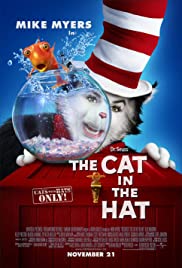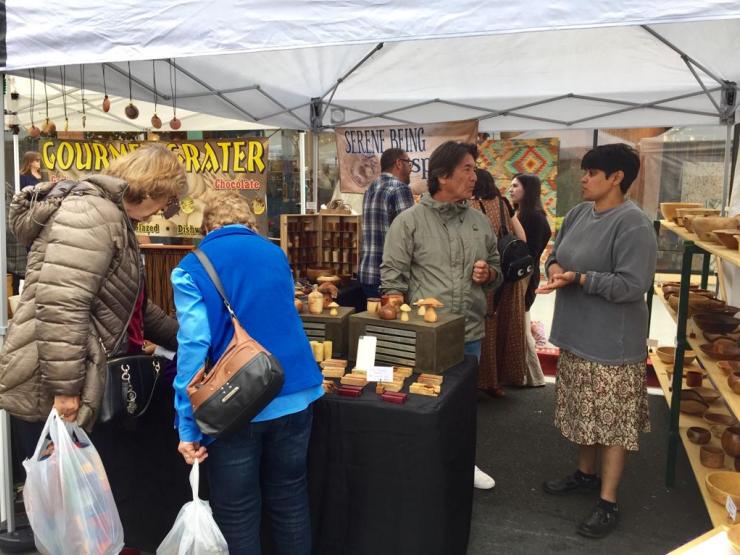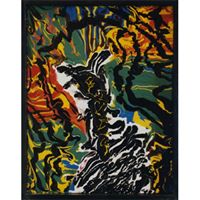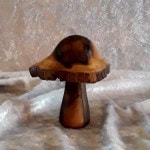

1. Originals: How Non-Conformists Move the World
The #1 New York Times bestseller that examines how people can champion new ideas—and how leaders can fight groupthink, from the author of Give and Take and co-author of Option B
“Reading Originals made me feel like I was seated across from Adam Grant at a dinner party, as one of my favorite thinkers thrilled me with his insights and his wonderfully new take on the world.” —Malcolm Gladwell, author of Outliers and The Tipping Point
“Originals is one of the most important and captivating books I have ever read, full of surprising and powerful ideas. It will not only change the way you see the world; it might just change the way you live your life. And it could very well inspire you to change your world.” —Sheryl Sandberg, COO of Facebook and author of Lean In
With Give and Take, Adam Grant not only introduced a landmark new paradigm for success but also established himself as one of his generation’s most compelling and provocative thought leaders. In Originals he again addresses the challenge of improving the world, but now from the perspective of becoming original: choosing to champion novel ideas and values that go against the grain, battle conformity, and buck outdated traditions. How can we originate new ideas, policies, and practices without risking it all?
Using surprising studies and stories spanning business, politics, sports, and entertainment, Grant explores how to recognize a good idea, speak up without getting silenced, build a coalition of allies, choose the right time to act, and manage fear and doubt; how parents and teachers can nurture originality in children; and how leaders can build cultures that welcome dissent. Learn from an entrepreneur who pitches his start-ups by highlighting the reasons not to invest, a woman at Apple who challenged Steve Jobs from three levels below, an analyst who overturned the rule of secrecy at the CIA, a billionaire financial wizard who fires employees for failing to criticize him, and a TV executive who didn’t even work in comedy but saved Seinfeld from the cutting-room floor. The payoff is a set of groundbreaking insights about rejecting conformity and improving the status quo.

2. From a co-founder of Pixar Animation Studios—the Academy Award–winning studio behind Coco, Inside Out, and Toy Story—comes an incisive book about creativity in business and leadership for readers of Daniel Pink, Tom Peters, and Chip and Dan Heath.
NEW YORK TIMES BESTSELLER | NAMED ONE OF THE BEST BOOKS OF THE YEAR BY The Huffington Post • Financial Times • Success • Inc. • Library Journal
Creativity, Inc. is a manual for anyone who strives for originality and the first-ever, all-access trip into the nerve center of Pixar Animation—into the meetings, postmortems, and “Braintrust” sessions where some of the most successful films in history are made. It is, at heart, a book about creativity—but it is also, as Pixar co-founder and president Ed Catmull writes, “an expression of the ideas that I believe make the best in us possible.”
For nearly twenty years, Pixar has dominated the world of animation, producing such beloved films as the Toy Story trilogy, Monsters, Inc., Finding Nemo, The Incredibles, Up, WALL-E, and Inside Out, which have gone on to set box-office records and garner thirty Academy Awards. The joyousness of the storytelling, the inventive plots, the emotional authenticity: In some ways, Pixar movies are an object lesson in what creativity really is. Here, in this book, Catmull reveals the ideals and techniques that have made Pixar so widely admired—and so profitable.
As a young man, Ed Catmull had a dream: to make the first computer-animated movie. He nurtured that dream as a Ph.D. student at the University of Utah, where many computer science pioneers got their start, and then forged a partnership with George Lucas that led, indirectly, to his co-founding Pixar in 1986. Nine years later, Toy Story was released, changing animation forever. The essential ingredient in that movie’s success—and in the thirteen movies that followed—was the unique environment that Catmull and his colleagues built at Pixar, based on leadership and management philosophies that protect the creative process and defy convention, such as:
• Give a good idea to a mediocre team, and they will screw it up. But give a mediocre idea to a great team, and they will either fix it or come up with something better.
• If you don’t strive to uncover what is unseen and understand its nature, you will be ill prepared to lead.
• It’s not the manager’s job to prevent risks. It’s the manager’s job to make it safe for others to take them.
• The cost of preventing errors is often far greater than the cost of fixing them.
• A company’s communication structure should not mirror its organizational structure. Everybody should be able to talk to anybody.

3. The Ten Faces of Innovation: IDEO's Strategies for Beating the Devil's Advocate and Driving Creativity Throughout Your Organization
In entertaining anecdotes, Kelley illustrates some of his firm's own successes (and joyful failures), as well as pioneering efforts at other leading companies. The book reveals how teams research and immerse themselves in every possible aspect of a new product or service, examining it from the perspective of clients, consumers, and other critical audiences.
Kelley takes the reader through the IDEO problem-solving method:

4. The Art of Innovation: Lessons in Creativity from IDEO, America's Leading Design Firm Hardcover – January 16, 2001
IDEO, the widely admired, award-winning design and development firm that brought the world the Apple mouse, Polaroid's I-Zone instant camera, the Palm V, and hundreds of other cutting-edge products and services, reveals its secrets for fostering a culture and process of continuous innovation.
There isn't a business in America that doesn't want to be more creative in its thinking, products, and processes. At many companies, being first with a concept and first to market are critical just to survive. In The Art of Innovation, Tom Kelley, general manager of the Silicon Valley based design firm IDEO, takes readers behind the scenes of this wildly imaginative and energized company to reveal the strategies and secrets it uses to turn out hit after hit.
IDEO doesn't buy into the myth of the lone genius working away in isolation, waiting for great ideas to strike. Kelley believes everyone can be creative, and the goal at his firm is to tap into that wellspring of creativity in order to make innovation a way of life. How does it do that? IDEO fosters an atmosphere conducive to freely expressing ideas, breaking the rules, and freeing people to design their own work environments. IDEO's focus on teamwork generates countless breakthroughs, fueled by the constant give-and-take among people ready to share ideas and reap the benefits of the group process. IDEO has created an intense, quick-turnaround, brainstorm-and-build process dubbed "the Deep Dive."
IDEO has won more awards in the last ten years than any other firm of its kind, and a full half-hour Nightline presentation of its creative process received one of the show's highest ratings. The Art of Innovation will provide business leaders with the insights and tools they need to make their companies the leading-edge, top-rated stars of their industries.
The author of the bestselling The Art of Innovation reveals the strategies IDEO, the world-famous design firm, uses to foster innovative thinking throughout an organization and overcome the naysayers who stifle creativity.
The role of the devil's advocate is nearly universal in business today. It allows individuals to step outside themselves and raise questions and concerns that effectively kill new projects and ideas, while claiming no personal responsibility. Nothing is more potent in stifling innovation.
Over the years, IDEO has developed ten roles people can play in an organization to foster innovation and new ideas while offering an effective counter to naysayers. Among these approaches are the Anthropologist--the person who goes into the field to see how customers use and respond to products, to come up with new innovations; the Cross-pollinator who mixes and matches ideas, people, and technology to create new ideas that can drive growth; and the Hurdler, who instantly looks for ways to overcome the limits and challenges to any situation.
Filled with engaging stories of how Kraft, Procter and Gamble, Safeway and the Mayo Clinic have incorporated IDEO's thinking to transform the customer experience, The Ten Faces of Innovation is an extraordinary guide to nurturing and sustaining a culture of continuous innovation and renewal.

5. The Innovator's Solution: Creating and Sustaining Successful Growth
An innovation classic. From Steve Jobs to Jeff Bezos, Clay Christensen’s work continues to underpin today’s most innovative leaders and organizations.
A seminal work on disruption—for everyone confronting the growth paradox.
For readers of the bestselling The Innovator’s Dilemma—and beyond—this definitive work will help anyone trying to transform their business right now.
In The Innovator’s Solution, Clayton Christensen and Michael Raynor expand on the idea of disruption, explaining how companies can and should become disruptors themselves. This classic work shows just how timely and relevant these ideas continue to be in today’s hyper-accelerated business environment.
Christensen and Raynor give advice on the business decisions crucial to achieving truly disruptive growth and propose guidelines for developing your own disruptive growth engine. The authors identify the forces that cause managers to make bad decisions as they package and shape new ideas—and offer new frameworks to help create the right conditions, at the right time, for a disruption to succeed. This is a must-read for all senior managers and business leaders responsible for innovation and growth, as well as members of their teams.
Based on in-depth research and theories tested in hundreds of companies across many industries, The Innovator’s Solution is a necessary addition to any innovation library—and an essential read for entrepreneurs and business builders worldwide.

6. The Innovator's Dilemma: The Revolutionary Book That Will Change the Way You Do Business
“Absolutely brilliant. Clayton Christensen provides an insightful analysis of changing technology and its importance to a company’s future success.”
—Michael R. Bloomberg
“This book ought to chill any executive who feels bulletproof —and inspire entrepreneurs aiming their guns.”
--Forbes
The Innovator’s Dilemma is the revolutionary business book that has forever changed corporate America. Based on a truly radical idea—that great companies can fail precisely because they do everything right—this Wall Street Journal, Business Week and New York Times Business bestseller is one of the most provocative and important business books ever written. Entrepreneurs, managers, and CEOs ignore its wisdom and its warnings at their great peril.

7. Cracking Creativity: The Secrets of Creative Genius
From the bestselling author of Thinkertoys, this follow up brings innovative creative thinking techniques within reach, giving you the tools to tackle everyday challenges in new ways.
Internationally renowned business creativity expert, Michael Michalko will show you how creative people think—and how to put their secrets to work for you in business and in your personal life. You don't have to be a genius to solve problems like one. Michalko researched and analyzed hundreds of history's greatest thinkers across disciplines—from Leonardo da Vinci to Pablo Picasso—to bring the best of their techniques together and to teach you how to apply them in your own life. Cracking Creativity is filled with exercises and anecdotes that will soon have you looking at problems and seeing many different solutions.

8. Creativity: Flow and the Psychology of Discovery and Invention (Harper Perennial Modern Classics)
The classic study of the creative process from the bestselling author of Flow
Creativity is about capturing those moments that make life worth living. Legendary psychologist Mihaly Csikszentmihalyi (“The leading researcher into ‘flow states.’” — Newsweek) reveals what leads to these moments—be it the excitement of the artist at the easel or the scientist in the lab—so that this knowledge can be used to enrich people's lives. Drawing on nearly one hundred interviews with exceptional people, from biologists and physicists, to politicians and business leaders, to poets and artists, as well as his thirty years of research on the subject, Csikszentmihalyi uses his famous flow theory to explore the creative process. He discusses such ideas as why creative individuals are often seen as selfish and arrogant, and why the "tortured genius" is largely a myth. Most important, he explains why creativity needs to be cultivated and is necessary for the future of our country, if not the world.

9. Evolve or Die: Lessons for World-Class Innovation & Creativity
"Many books end up on a bookshelf. Evolve or Die should be very near where you work. After reading it, I keep going back to it. I love to randomly open it up to any page and read a few pages, often several times a week. It's a fun experience and very stimulating for anyone with a big curiosity." -- John Sculley, Businessman, Entrepreneur and Investor
Expand your creative and entrepreneurial mind and learn how to give the world everything you've got to offer.
Assuming you're someone interested in learning and improving - and making a difference - this book was written with you in mind. Whether you're at the top of the corporate pyramid or somewhere nearer the base, or a stay-at-home parent coordinating the endless duties of the family, or an entrepreneur orchestrating a finite amount of time and resources, you're working to make a difference. And yes, your work and what you do matters. This book contains a culmination of experiences, thoughts, and learning from world-class innovators and creators.
Every single story is true, and every single story is relevant to you. Common themes of these stories are hard work, persistence, and courage. Sometimes luck plays a role, but things are more often learned the hard way. And, as is the case whenever there are innovators and creators involved, thereís also a fair amount of love running rampant through these stories. Evidently, rampant is how love likes to run - especially when itís heading toward a goal and vision. Perhaps most importantly, youíll see that every one of these luminaries was made, not born.
The title Evolve or Die is somewhat blunt. It's an exaggeration, but I believe that it's closer to the truth than many people realize. Itís my genuine hope that this book and the stories within it are of real interest and benefit to you.
It might seem trite to write this, but (in reference to Henry David Thoreau) you werenít meant to settle for a life of quiet desperation. You need to innovate and create. Itís better to learn from the champions, practice like your life depends on it (and to an extent it does), and come out strong and punching above your weight (because you can). Youíve got a lot to offer this world. We all do. Iím in your corner, offering guidance and cheering for you.
Get in the ring, come out swinging, and fight the good fight.Don't wait! Order your copy today.
Visit tomtriumph dot com and download the free manifesto The Call to Innovate: Myths, Best Practices and Achieving Your Rightful Place.
PRAISE FOR EVOLVE OR DIE:
- "Evolve or Die can help provide is at once inspiring, entertaining, and thought-provoking. Tom Triumph combines key business insights with his unique narrative style. The result is a must-read for every business executive." ó Kartik Hosanagar, Professor at The Wharton School
- "Tom shares some simple, actionable advice for all of us on cultivating our superpowers... stories to change your approach to personal and professional growth..." ó Dave Blakely, Partner, Mach49
- "Tom Triumph has artfully captured many of the key lessons in the creative process... and provides simple models to make this all actionable. A perfect reminder for anyone looking to push their own limits..." ó Andy Walshe, Performance Manager, Red Bull Stratos, program designer for the US Olympic ski and snowboard teams
- "The energy in Evolve or Die is the energy of someone whoís lived life fully and has not lost that glimmer of 'what is possible' in individuals. Tom gives readers tools and insights... Why? Because... YOU matter, more than you possibly know." ó David Brier, Chief Gravity Defyer, DBD International

10. Creative Confidence: Unleashing the Creative Potential Within Us All
IDEO founder and Stanford d.school creator David Kelley and his brother Tom Kelley, IDEO partner and the author of the bestselling The Art of Innovation, have written a powerful and compelling book on unleashing the creativity that lies within each and every one of us.
Too often, companies and individuals assume that creativity and innovation are the domain of the "creative types." But two of the leading experts in innovation, design, and creativity on the planet show us that each and every one of us is creative. In an incredibly entertaining and inspiring narrative that draws on countless stories from their work at IDEO, the Stanford d.school, and with many of the world's top companies, David and Tom Kelley identify the principles and strategies that will allow us to tap into our creative potential in our work lives, and in our personal lives, and allow us to innovate in terms of how we approach and solve problems. It is a book that will help each of us be more productive and successful in our lives and in our careers.

11. The Act of Creation
While the study of psychology has offered little in the way of explaining the creative process, Koestler examines the idea that we are at our most creative when rational thought is suspended--for example, in dreams and trancelike states. All who read The Act of Creation will find it a compelling and illuminating book.
All creative activities have a basic pattern in common. Koestler describes this pattern in amazing detail across many disciplines. Knowing this pattern will help you generate better ideas.

12. Mastering the Dynamics of Innovation
The author presents a compelling look at how innovation transforms industries, raising the fortunes of some firms while destroying others. The book draws on the rich history of innovation by inventors and entrepreneurs--ranging from the birth of typewriters to the emergence of personal computers, gas lamps to fluorescent lighting, George Eastman's amateur photography to electronic imaging--to develop a practical model for how innovation enters an industry, how mainstream firms typically respond, and how--over time--new and old players wrestle for dominance. Utterback asserts that existing organizations must consistently abandon past success and embrace innovation--even when it undermines their traditional strengths. He sets forth a strategy to do so, and identifies the responsibilities of managers to lead and focus that effort.
Mastering the Dynamics of Innovation offers a pioneering model for how innovation unsettles industries and firms, and features fascinating histories of new product developments and strategies for nurturing innovation. "The most valuable book I've read in years. . . . The analysis is brilliant."--Tom Peters. Available August 1996.

13. Creativity in Product Innovation
Creativity in Product Innovation describes a remarkable new technique for improving the creativity process in product design. Certain "regularities" in product development are identifiable, objectively verifiable and consistent for almost any kind of product. These regularities are described by the authors as Creativity Templates. This book describes the theory and implementation of these templates, showing how they can be used to enhance the creative process and thus enable people to be more productive and focused. Representing the culmination of years of research on the topic of creativity in marketing, the Creativity Templates approach has been recognized as a breakthrough in such journals as Science, Journal of Marketing Research, Management Science, and Technological Forecasting and Social Change.

14. The Creative Mind: Myths and Mechanisms
How is it possible to think new thoughts? What is creativity and can science explain it? And just how did Coleridge dream up the creatures of The Ancient Mariner?
When The Creative Mind: Myths and Mechanisms was first published, Margaret A. Boden's bold and provocative exploration of creativity broke new ground. Boden uses examples such as jazz improvisation, chess, story writing, physics, and the music of Mozart, together with computing models from the field of artificial intelligence to uncover the nature of human creativity in the arts.
The second edition of The Creative Mind has been updated to include recent developments in artificial intelligence, with a new preface, introduction and conclusion by the author. It is an essential work for anyone interested in the creativity of the human mind.

15. Think!: Before It's Too Late
The world is full of problems and conflicts. So why can we not solve them? According to Edward de Bono, current thinking cannot solve world problems because current thinking is itself the problem. And this is getting worse: we are so accustomed to readily available information online that we search immediately for the answers rather than thinking about them. Our minds function like trying to drive a car using only one wheel. There's nothing wrong with that one wheel—conventional thinking—but we could all get a lot further if we used all four. De Bono examines why we think the way we do from a historical perspective and uses some of his famous thinking techniques combined with new ideas to show us how to change the way we think. If we strengthen our ability and raise our thinking level, other areas of our life—both personal and business success—will improve. De Bono is the master of the original big "concept" book and his enticement to us to use our minds as constructively as possible should appeal to a whole new generation of fans.
There are several other books on creativity and innovation:
1. The Accidental Creative by Todd Henry. A quick, but entertaining read on how to generate brilliant ideas at a moment's notice.
It isn't enough to just do your job anymore. In order to thrive in today's marketplace, all of us, regardless of our role, have to be ready to generate brilliant ideas on demand. The Accidental Creative teaches effective practices that support your creative process. You'll discover how to:
- Focus in on your most critical work and reclaim your attention.
- Develop stimulating relationships that will lead to creative insights.
- Effectively manage your energy so that you are always ready to engage.
- Curate stimuli that help you stay mentally focused.
- Leverage your hours wisely and effectively to eliminate creativity drains.
2. The Art of Work by Jeff Goins. While creativity isn't the focus, this book is full of insights on how to build a career or business around your creative passions.
As Jeff Goins explains, the search begins with passion but does not end there. Only when our interests connect with the needs of the world do we begin living for a larger purpose. Those who experience this intersection experience something exceptional and enviable. Though it is rare, such a life is attainable by anyone brave enough to try.
3. Collective Genius by Linda Hill, Greg Brandeau, Emily Truelove, and Kent Lineback. A manual on creative collaborations by an outstanding collaboration of world-class scholars and creative thinkers.
You might think the key to innovation is attracting exceptional creative talent. Or making the right investments. Or breaking down organizational silos. All of these things may help—but there’s only one way to ensure sustained innovation: you need to lead it—and with a special kind of leadership. Collective Genius shows you how.
4. Little Bets by Peter Sims. Great ideas don't come out fully formed. They grow and change, and eventually shape up from making lots of small discoveries.
What do Apple CEO Steve Jobs, comedian Chris Rock, prize-winning architect Frank Gehry, and the story developers at Pixar films all have in common? Bestselling author Peter Sims found that rather than start with a big idea or plan a whole project in advance, they make a methodical series of little bets, learning critical information from lots of little failures and from small but significant wins.
5. Making Ideas Happen by Scott Belsky. It's not enough to have ideas. You also have to make them happen, and Belsky shows us how to merge creativity with productivity.
According to productivity expert Scott Belsky, no one is born with the ability to drive creative projects to completion. Execution is a skill that must be developed by building your organizational habits and harnessing the support of your colleagues.
6. The Myths of Creativity by David Burkus. OK. I'm biased on this one, but since I limited the list to 15, I had to include the synthesis of all my research on creativity and creative thinkers.
The Myths of Creativity demystifies the processes that drive innovation. Based on the latest research into how creative individuals and firms succeed, David Burkus highlights the mistaken ideas that hold us back and shows us how anyone can embrace a practical approach, grounded in reality, to finding the best new ideas, projects, processes, and programs.
7. Powers of Two by Joshua Wolf Shenk. Creativity is a team effort. This book profiles the great teams and draws lessons we all can apply.
When it comes to shaping the culture, Shenk argues, two is the magic number, not just because of the dyads behind everything from South Park to the American Civil Rights movement to Starry Night, but because of the nature of creative thinking. Even when we're alone, we are in a sense "collaborating" with a voice inside our head. At once intuitive and surprising, Powers of Two will change the way we think about innovation.
8. A Whole New Mind by Daniel Pink. Pink makes a compelling argument that creativity is the only thing that can't be outsourced, and offers a guide to growing our creative thinking.
The future belongs to a different kind of person with a different kind of mind: artists, inventors, storytellers-creative and holistic "right-brain" thinkers whose abilities mark the fault line between who gets ahead and who doesn't.
Drawing on research from around the world, Pink (author of To Sell Is Human: The Surprising Truth About Motivating Others) outlines the six fundamentally human abilities that are absolute essentials for professional success and personal fulfillment--and reveals how to master them. A Whole New Mind takes readers to a daring new place, and a provocative and necessary new way of thinking about a future that's already here.
9. Wired to Create by Scott Barry Kaufman and Carolyn Gregoire. An empirical look at the things highly creative people do differently.
Discover the ten things highly creative people do differently.
Is it possible to make sense of something as elusive as creativity? Based on psychologist Scott Barry Kaufman’s groundbreaking research and Carolyn Gregoire’s popular article in the Huffington Post, Wired to Create offers a glimpse inside the “messy minds” of highly creative people. Revealing the latest findings in neuroscience and psychology, along with engaging examples of artists and innovators throughout history, the book shines a light on the practices and habits of mind that promote creative thinking. Kaufman and Gregoire untangle a series of paradoxes— like mindfulness and daydreaming, seriousness and play, openness and sensitivity, and solitude and collaboration – to show that it is by embracing our own contradictions that we are able to tap into our deepest creativity. Each chapter explores one of the ten attributes and habits of highly creative people:
Imaginative Play * Passion * Daydreaming * Solitude * Intuition * Openness to Experience * Mindfulness * Sensitivity * Turning Adversity into Advantage * Thinking Differently
In Conclusion, without saying who said what the following could be summarized:

Can you become immune to SARS-CoV-2? (Radoslav Zilinsky / Getty Images)
By Katherine J. Wu
SMITHSONIANMAG.COM
MARCH 30, 2020
By Katherine J. Wu
SMITHSONIANMAG.COM
MARCH 30, 2020
Resolving the COVID-19 pandemic quickly hinges on a crucial factor: how well a person’s immune system remembers SARS-CoV-2, the virus behind the disease, after an infection has resolved and the patient is back in good health.
This phenomenon, called immune memory, helps our bodies avoid reinfection by a bug we’ve had before and influences the potency of life-saving treatments and vaccines. By starving pathogens of hosts to infect, immune individuals cut off the chain of transmission, bolstering the health of the entire population.
Scientists don’t yet have definitive answers about SARS-CoV-2 immunity. For now, people who have had the disease appear unlikely to get it again, at least within the bounds of the current outbreak. Small, early studies in animals suggest immune molecules may stick around for weeks (at least) after an initial exposure. Because researchers have only known about the virus for a few months, however, they can’t yet confidently forecast how long immune defenses against SARS-CoV-2 will last.
“We are so early in this disease right now,” says C. Brandon Ogbunu, a computational epidemiologist at Brown University. “In many respects, we have no idea, and we won’t until we get a longitudinal look.”
A memorable infection
When a pathogen breaches the body’s barriers, the immune system will churn out a variety of immune molecules to fight it off. One subset of these molecules, called antibodies, recognizes specific features of the bug in question and mounts repeated attacks until the invader is purged from the body. (Antibodies can also be a way for clinicians to tell if a patient has been recently infected with a given pathogen, even when the microbe itself can no longer be detected.)
Though the army of antibodies dwindles after a disease has resolved, the immune system can whip up a new batch if it sees the same pathogen again, often quashing the new infection before it has the opportunity to cause severe symptoms. Vaccines safely simulate this process by exposing the body to a harmless version or piece of a germ, teaching the immune system to identify the invader without the need to endure a potentially grueling disease.
From the immune system’s perspective, some pathogens are unforgettable. One brush with the viruses that cause chickenpox or polio, for instance, is usually enough to protect a person for life. Other microbes, however, leave less of an impression, and researchers still aren’t entirely sure why. This applies to the four coronaviruses known to cause a subset of common cold cases, says Rachel Graham, an epidemiologist and coronavirus expert at the University of North Carolina at Chapel Hill. Immunity against these viruses seems to wane in a matter of months or a couple of years, which is why people get colds so frequently.
Because SARS-CoV-2 was only discovered recently, scientists don’t yet know how the human immune system will treat this new virus. Reports have surfaced in recent weeks of people who have tested positive for the virus after apparently recovering from COVID-19, fueling some suspicion that their first exposure wasn’t enough to protect them from a second bout of disease. Most experts don’t think these test results represent reinfections. Rather, the virus may have never left the patients’ bodies, temporarily dipping below detectable levels and allowing symptoms to abate before surging upward again. Tests are also imperfect, and can incorrectly indicate the virus’ presence or absence at different points.
Because the COVID-19 outbreak is still underway, “if you’ve already had this strain and you’re re-exposed, you would likely be protected,” says Taia Wang, an immunologist and virologist at Stanford University and the Chan Zuckerberg Biohub. Even antibodies against the most forgettable coronaviruses tend to stick around for at least that long.
COVID-19 packs a stronger punch than the common cold, so antibodies capable of fending off this new coronavirus may have a shot at lingering longer. Broadly speaking, the more severe the disease, the more resources the body will dedicate to memorizing that pathogen’s features, and the stronger and longer lasting the immune response will be, says Allison Roder, a virologist at New York University. Previous studies have shown that people who survived SARS, another coronavirus disease that resulted in a 2003 epidemic, still have antibodies against the pathogen in their blood years after recovery. But this trend is not a sure thing, and scientists don’t know yet whether SARS-CoV-2 will fall in line.
Earlier this month, a team of researchers posted a study (which has yet to be published in a peer-reviewed journal) describing two rhesus macaques that could not be reinfected with SARS-CoV-2 several weeks after recovering from mild bouts of COVID-19. The authors chalked the protection up to the antibodies they found in the monkeys’ bodies, apparently produced in response to the virus—a result that appears to echo the detection of comparable molecules in human COVID-19 patients.
But the mere presence of antibodies doesn’t guarantee protection, Wang says. Reinfections with common cold coronaviruses can still happen in patients who carry antibodies against them. And a bevy of other factors, including a person’s age and genetics, can drastically alter the course of an immune response.
An evolving virus?
Complicating matters further is the biology of SARS-CoV-2 itself. Viruses aren’t technically alive: While they contain genetic instructions to make more of themselves, they lack the molecular tools to execute the steps, and must hijack living cells to complete the replication process for them.
After these pathogens infect cells, their genomes often duplicate sloppily, leading to frequent mutations that persist in the new copies. Most of these changes are inconsequential, or evolutionary dead ends. Occasionally, however, mutations will alter a viral strain so substantially that the immune system can no longer recognize it, sparking an outbreak—even in populations that have seen a previous version of the virus before. Viruses in the influenza family are the poster children for these drastic transformations, which is part of why scientists create a new flu vaccine every year.

When flu viruses copy their genomes, they often make mistakes. These errors can change the way their proteins look to the immune system, helping the viruses evade detection. (Rebecca Senft, Science in the News)
Some viruses have another immunity-thwarting trick as well: If a person is infected with two different strains of the flu at the same time, those viruses can swap genetic material with each other, generating a new hybrid strain that doesn’t look like either of its precursors, allowing it to skirt the body’s defenses.
Researchers don’t yet know how quickly similar changes could occur in SARS-CoV-2. Unlike flu viruses, coronaviruses can proofread their genomes as they copy them, correcting mistakes along the way. That feature reduces their mutation rate, and might make them “less of a moving target” for the immune system, says Scott Kenney, an animal coronavirus expert at Ohio State University. But coronaviruses still frequently trade segments of their genetic code with each other, leaving the potential for immune evasion wide open.
So far, SARS-CoV-2 also doesn’t appear to be undergoing any extreme mutations as it sweeps across the globe. That may be because it’s already hit on such a successful strategy, and doesn’t yet need to change its tactic. “Right now, it’s seeing a completely naive population” that’s never been exposed to the virus before, Graham says. The virus “doesn’t seem to be responding to any kind of pressure,” she adds.
Should SARS-CoV-2 get a second infectious wind, it may not come for some time. Even fast-mutating influenza strains can take years to reenter populations. And if or when that day comes, future COVID-19 outbreaks could be milder. Sometimes viral success means treading gently with the host, says Catherine Freije, a virologist at Harvard University.
“Viruses that causes severe disease actually tend to die out faster because a host that’s feeling ill can’t spread it as well.” In those cases, she says, sometimes, “the outbreak just sort of fizzles out.”
But we can’t rule out the possibility that SARS-CoV-2 could change in a way that bumps up its virulence instead, Kenney says. To steel the population for what’s ahead, sometimes, he adds, “We just have to be the ultimate pessimist when it comes to this type of outbreak.”
Protection without disease
Although much about COVID-19 remains unknown, researchers are racing through vaccine development to boost the world’s collective immunity—something that would stem the spread of the virus through the human population.
“Vaccine development is going to be critical to controlling this outbreak,” says Wang. That’s especially true if SARS-CoV-2 returns for an encore act. “If it’s an ever-present pathogen, we’ll certainly need vaccines to be part of our arsenal.”
Researchers have managed to concoct partially effective vaccines to combat other coronavirus infections in animals, such as pigs. In these creatures, immunity lasts “at least several months, possibly longer,” says Qiuhong Wang, a coronavirus expert at Ohio State University. (Because many of the subjects are livestock, they often don’t live long enough for researchers to test them further.) These vaccines may be reason for hope, she says, pointing out that “humans are animals, too.”

Two flu viruses can sometimes infect the same host cell. When they spill their contents into the cell, their genetic material can recombine, generating new hybrid viruses that are mixtures of their precursors. (Rebecca Senft, Science in the News)
Several research teams are designing human vaccines that trigger the production of antibodies that attack SARS-CoV-2’s spike protein—the molecular key the virus uses to unlock and enter human cells. Because the spike protein is crucial for viral infection, it makes an excellent target for a vaccine, says Benhur Lee, a virologist at the Icahn School of Medicine at Mount Sinai. But Lee also points out that the spike protein, like other parts of the virus, is capable of mutating—something that could compromise the ability of a vaccinated individual to ward off the virus.
If mutation regularly occurs to that extent, scientists may need to frequently reformulate COVID-19 vaccines, like they do with pathogens in the flu family, Wang says. “We’d be starting over to some degree if there is a new outbreak.”
However, Wang cautions that it’s too soon to tell whether that will be the case. As research worldwide proceeds at breakneck speed, scientists may instead be able to brew up a universal vaccine that’s active against multiple forms of SARS-CoV-2.
But vaccines, which require rigorous testing and retesting to ensure efficacy and safety, take a long time to develop—typically more than a year, Qiuhong Wang says. In the meantime, researchers are turning their attention to treatments that could save those who have already been infected.
Some solutions will inevitably require antiviral drugs that tackle active SARS-CoV-2 infections after they’ve already begun, usually by interfering with the virus’ infection cycle.
But another approach, based on a time-tested technique, also taps into the immune response: transferring blood plasma—and the disease-repelling antibodies it contains—from recovered patients into infected ones. Though new to the current pandemic, the treatment has been deployed in various forms since the 1890s, and saw modest success during outbreaks of SARS in 2003 and Ebola in 2014. Ongoing trials in New York are now recruiting carefully screened, healthy volunteers who no longer have symptoms or detectable virus in their bodies to donate plasma. Importantly, this doesn’t diminish donors’ own resistance to SARS-CoV-2, since their immune systems have already learned to manufacture more antibodies.
Antibodies degrade over time, and won’t protect the people who receive these transfusions forever. The plasma treatments also can’t teach their recipients’ immune systems to make new antibodies after the first batch disappears. But this stopgap measure could ease the burden on health care workers and buy time for some of the outbreak’s most vulnerable victims.
Even as the pandemic evolves, researchers are already looking ahead. Just as the response to this outbreak was informed by its predecessors, so too will COVID-19 teach us about what’s to come, Qiuhong Wang says. The entry of other coronavirus strains into our species “is inevitable.”
“We don’t know when or where that will happen,” she says. But hopefully by the time the next pandemic comes around, the world will be more ready.
About Katherine J. Wu
Katherine J. Wu is a Boston-based science journalist and Story Collider senior producer whose work has appeared in National Geographic, Undark magazine, Popular Science and more. She holds a Ph.D. in Microbiology and Immunobiology from Harvard University, and was Smithsonian magazine's 2018 AAAS Mass Media Fellow. Read more from this author | Follow @katherinejwu
Difference Between Immune Response to Bacteria and Virus
June 23, 2018
by Lakna
The main difference between immune response to bacteria and virus is that the immune system attacks bacteria by complement proteins and phagocytosis whereas the immune system recognizes virus-infected cells through epitopes presented by MHC molecules. Generally, bacteria live outside the host cells; thus, components of the immune system can easily attack them. In contrast, viruses live inside the host cells and therefore, immune system components are unable to recognize them.
Bacteria and virus are the two types of pathogens that can invade host organisms. The immune system can respond to both types of pathogens in different ways by triggering an immune response.
Key Areas Covered
1. What is an Immune Response to Bacteria
– Definition, Facts, Methods
2. What is an Immune Response to Virus
– Definition, Facts, Methods
3. What are the Similarities Between Immune Response to Bacteria and Virus
– Outline of Common Features
4. What is the Difference Between Immune Response to Bacteria and Virus
– Comparison of Key Differences
Read More . . . . .
Medical Encyclopedia →
Immune response
The immune response is how your body recognizes and defends itself against bacteria, viruses, and substances that appear foreign and harmful.
Information
The immune system protects the body from possibly harmful substances by recognizing and responding to antigens. Antigens are substances (usually proteins) on the surface of cells, viruses, fungi, or bacteria. Nonliving substances such as toxins, chemicals, drugs, and foreign particles (such as a splinter) can also be antigens. The immune system recognizes and destroys, or tries to destroy, substances that contain antigens.
Your body's cells have proteins that are antigens. These include a group of antigens called HLA antigens. Your immune system learns to see these antigens as normal and usually does not react against them.
INNATE IMMUNITY
Innate, or nonspecific, immunity is the defense system with which you were born. It protects you against all antigens. Innate immunity involves barriers that keep harmful materials from entering your body. These barriers form the first line of defense in the immune response. Examples of innate immunity include:
Innate immunity also comes in a protein chemical form, called innate humoral immunity. Examples include the body's complement system and substances called interferon and interleukin-1 (which causes fever).
If an antigen gets past these barriers, it is attacked and destroyed by other parts of the immune system.
ACQUIRED IMMUNITY
Acquired immunity is immunity that develops with exposure to various antigens. Your immune system builds a defense against that specific antigen.
PASSIVE IMMUNITY
Passive immunity is due to antibodies that are produced in a body other than your own. Infants have passive immunity because they are born with antibodies that are transferred through the placenta from their mother. These antibodies disappear between ages 6 and 12 months.
Passive immunization may also be due to injection of antiserum, which contains antibodies that are formed by another person or animal. It provides immediate protection against an antigen, but does not provide long-lasting protection. Immune serum globulin (given for hepatitis exposure) and tetanus antitoxin are examples of passive immunization.
BLOOD COMPONENTS
The immune system includes certain types of white blood cells. It also includes chemicals and proteins in the blood, such as antibodies, complement proteins, and interferon. Some of these directly attack foreign substances in the body, and others work together to help the immune system cells.
Lymphocytes are a type of white blood cell. There are B and T type lymphocytes.
As lymphocytes develop, they normally learn to tell the difference between your own body tissues and substances that are not normally found in your body. Once B cells and T cells are formed, a few of those cells will multiply and provide "memory" for your immune system. This allows your immune system to respond faster and more efficiently the next time you are exposed to the same antigen. In many cases, it will prevent you from getting sick. For example, a person who has had chickenpox or has been immunized against chickenpox is immune from getting chickenpox again.
Watch this video about:Immune response
INFLAMMATION
The inflammatory response (inflammation) occurs when tissues are injured by bacteria, trauma, toxins, heat, or any other cause. The damaged cells release chemicals including histamine, bradykinin, and prostaglandins. These chemicals cause blood vessels to leak fluid into the tissues, causing swelling. This helps isolate the foreign substance from further contact with body tissues.
The chemicals also attract white blood cells called phagocytes that "eat" germs and dead or damaged cells. This process is called phagocytosis. Phagocytes eventually die. Pus is formed from a collection of dead tissue, dead bacteria, and live and dead phagocytes.
Watch this video about:Phagocytosis
IMMUNE SYSTEM DISORDERS AND ALLERGIES
Immune system disorders occur when the immune response is directed against body tissue, is excessive, or is lacking. Allergies involve an immune response to a substance that most people's bodies perceive as harmless.
IMMUNIZATION
Vaccination (immunization) is a way to trigger the immune response. Small doses of an antigen, such as dead or weakened live viruses, are given to activate immune system "memory" (activated B cells and sensitized T cells). Memory allows your body to react quickly and efficiently to future exposures.
Watch this video about:Vaccines
COMPLICATIONS DUE TO AN ALTERED IMMUNE RESPONSE
An efficient immune response protects against many diseases and disorders. An inefficient immune response allows diseases to develop. Too much, too little, or the wrong immune response causes immune system disorders. An overactive immune response can lead to the development of autoimmune diseases, in which antibodies form against the body's own tissues.
Complications from altered immune responses include:
4/21/2020
4/21/2020
4/21/2020
Cognitive Neuroscience of Creativity Lab at Penn State uses brain imaging and behavioral experiments to examine how creative thinking works in different contexts and domains, from the arts to the sciences to everyday life. His article examines the part of the brain that directs creative thought and asks the million-dollar question: Can creativity be enhanced?
Abstract: The Big Five personality dimension Openness/Intellect is the trait most closely associated with creativity and creative achievement. Little is known, however, regarding the discriminant validity of its two aspects-Openness to Experience (reflecting cognitive engagement with perception, fantasy, aesthetics, and emotions) and Intellect (reflecting cognitive engagement with abstract and semantic information, primarily through reasoning)-in relation to creativity. In four demographically diverse samples totaling 1,035 participants, we investigated the independent predictive validity of Openness and Intellect by assessing the relations among cognitive ability, divergent thinking, personality, and creative achievement across the arts and sciences. We confirmed the hypothesis that whereas Openness predicts creative achievement in the arts, Intellect predicts creative achievement in the sciences. Inclusion of performance measures of general cognitive ability and divergent thinking indicated that the relation of Intellect to scientific creativity may be due at least in part to these abilities. Lastly, we found that Extraversion additionally predicted creative achievement in the arts, independently of Openness. Results are discussed in the context of dual-process theory.

We benefited from the support of leadership at multiple levels to actually carry out this project.?Julie Graves, Program Evaluator, Epidemiology, Planning and Evaluation Branch, Prevention Services Division, Colorado Department of Public Health and Environment
Besides trying to serve LGBT individuals and communities in Colorado, LGBT HOPP included "their children, their parents, their siblings, and their families who care about them" because LGBT health" is important to a much broader segment of our state," elaborated Ms. Graves.
Ms. Graves and her colleagues at CDPHE from different programs utilized a participatory planning process to draw upon the experiences and ideas of the organizations and communities already trying to address LGBT health.
During the strategic planning process, "over 100 people on our roster participated in one way or another," stated Ms. Graves. Participation and partnership were essential to the success of this project as individuals and organizations "committed staff time and resources to this process," continued Ms. Graves.
From the strategic planning process, LGBT HOPP created "a very clear and actionable plan" not only for CDPHE but also for the external partners to "more explicitly and intentionally address LGBT health," described Ms. Graves.
One positive outcome of the LGBT HOPP is that another division within CDPHE now includes LGBT communities in its focus on health disparities. The Colorado Office of Health Disparities has focused their efforts on health equity "as it relates to ethnic/racial minorities, and now as a result of the LGBT HOPP project, that office has expanded its focus on health disparities to be inclusive of sexual orientation and gender identity discrimination and disparities within those minority communities," explained Julie Graves.
Everyone who participated in the planning process received the plan describing four goal areas related to LGBT access to health, community engagement, LGBT policy, and LGBT-related data.
The project intended for participants to take the action plan back “to their agencies and their networks that they are already working in to demonstrate the commitment from their state-level public health agency,” continued Ms. Graves.
"We realized we needed to do a more intentional job of paying attention to the needs of this population."—Julie Graves, Program Evaluator, CDPHE
The funding from the Healthy People 2020 Community Innovations Project was critical to the success of LGBT HOPP because "resources are tight, specifically around doing health equity work," stated Ms. Graves.
One important lesson that CDPHE learned during the implementation of LGBT HOPP was how to bring people to the table when it was state government doing the work. "The lesson we’ve learned is we need to expand our creativity in inviting a diverse range of communities to these processes," explained Ms. Graves.
As CDPHE continues to implement the action plan, one positive change has been an "increased visibility of the topic and issues surrounding LGBT health," concluded Ms. Graves.
"People are at different places on a continuum in their learning processes and understanding about health equity and how inequities happen. It takes a consistent, non-defensive, and open communication effort to really meet people wherever they are in that learning process and try to help them make the next step."—Julie Graves, Program Evaluator, CDPHE
Date Posted: 03/29/2013
Organization Name: Colorado Department of Health and Environment
4300 Cherry Creek Drive South
Denver
,
CO
80246
United States
Organization Mission:
The Colorado Department of Public Health and Environment's Division of Disease Control and Environmental Epidemiology tracks, controls and prevents communicable diseases and other conditions in Colorado to reduce illness and premature deaths. Staff members also assess risks from toxic exposures in the environment to prevent adverse health effects.
Organization Type:
State Government Agency
Program Name:
LGBT Health Outcomes Planning Project
4300 Cherry Creek Drive South
Denver
,
CO
80246
United States
Healthy People 2020 Topic Area(s) addressed:
Healthy People 2020 overarching goal addressed:
Achieve health equity, eliminate disparities, and improve the health of all groups.
Year:
2012
The Office of Disease Prevention and Health Promotion (ODPHP) challenged America’s health organizations to come up with new and innovative projects that could tackle some of today’s most pressing public health issues.
Disclaimer: Reference in this web site to any specific product, process, service, organization, or company does not constitute its endorsement or recommendation by U.S. Government or the U.S. Department of Health and Human Services.
Syndicated Content Details:
Source URL: https://www.healthypeople.gov/2020/healthy-people-in-action/story/healthy-people-2020-work-community-lgbt-health-outcomes-planning-project
Source Agency: Office of Disease Prevention and Health Promotion, Healthy People (ODPHP-HP)
Captured Date: 2016-06-09 16:02:37.0
4/20/2020
4/20/2020
4/20/2020
4/20/2020
4/19/2020




California State University, Fullerton
BFA - Sculpture.
Cranbrook Academy of Arts
MFA - Sculpture.
Speciality: Artist, and Art & Health Advocates
For innovation to flourish, organizations must create an environment that fosters creativity; bringing together multi-talented groups of people who work in close collaboration together— exchanging knowledge, ideas and shaping the direction of the future. Organizations led by creative leaders have a higher success rate in innovation, employee engagement, change, and renewal. --Linda Naiman, founder of Creativity at Work. "What if you could repair your body at the cellular level? Could food could be grown right in the crowded cities where people live? How far can we extend the human life span?"
Innovation in Work: According to Shlain and my research on Creative Mind Expansion, we're in the process of building a Global Brain. One that will allow us to get a higher success rate by using increased ingenuity, learning through the internet, and working with multi-talented groups of people and technology working together from all over the World on a Global basis.
The artistry of Sarena Bhargava may be found among various means, from beautifully curated collections to galleries to industrial artwork and the movie screen. First-generation American-Indian, Sarena is a master of sculpture, welding, painting, and woodwork, holding a Master of Fine Arts from Cranbrook Academy of Arts.
Sarena has commissioned sculpture work housed within the permanent collection of Cal State Fullerton (her baccalaureate alma mater). Sarena has also collaborated with Disneyland Tokyo, Disneyland (Anaheim, CA, USA) and Universal Studios Hollywood on industrial artwork.
Sarena’s sculpture work and artistic credits within the movie industry span two decades. You may learn more about Sarena’s filmography at the International Movie Database (IMBd) by clicking here.
In recent years, woodturning has become an artistic craving for Sarena’s creative expression, allowing her to explore the organic splendor and diverse energy of wood. Each piece has a story to share and is transformed into a distinctively inspired expression of beauty and function.


Filmography
Art department (27 credits)














Umesh C. Bhargava, BS., B.Pharm., MS.Pharm., Ph. D. in Pharmacology (click the above pictures),RPH
Ellagic Acid - Umesh C. Bhargava, Ph. D.*
Benefits: Polyphenols are micronutrients having anti-prolific and antioxidants properties that can prevent prostate cancer, diabetes, and cardiovascular diseases. These health benefits were first discovered during the period 1977 - 1990 after the original ellagic acid (EA) research results were known as shown below. During this time EA also became very popular on the internet as an anticancer compound. EA is found in many fruits, nuts, and vegetables, therefore easy to consume in vegan or vegetarian diets. Currently, there are more than 4000 publications & patents on ellagic acid supporting the above health benefits.
Original ellagic acid research* from black walnut in 1968 showed many pharmacological effects in small animals such as anti-tumor, brain-protecting effect, analgesic, and tranquilizer like properties, antibacterial, anti-histaminic or anti-inflammatory effects, along with blood pressure-lowering action. Some of the experiments were so powerful that Ellagic acid prevented death almost 100% in mice from electroconvulsive shock and death from the acute release of histamine by strong histamine liberators similar to the prevention of mortality caused by acute anaphylactic shock.
